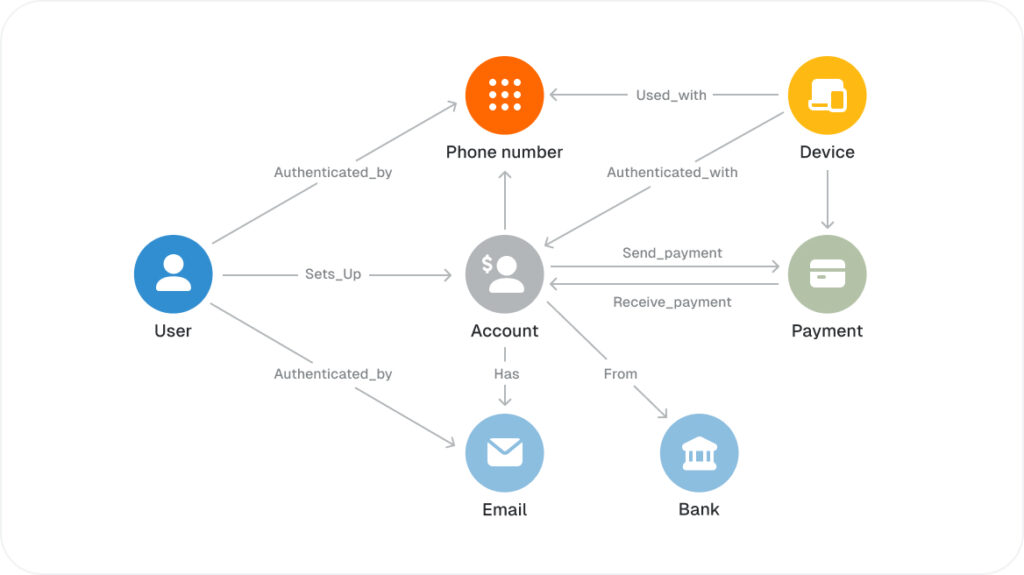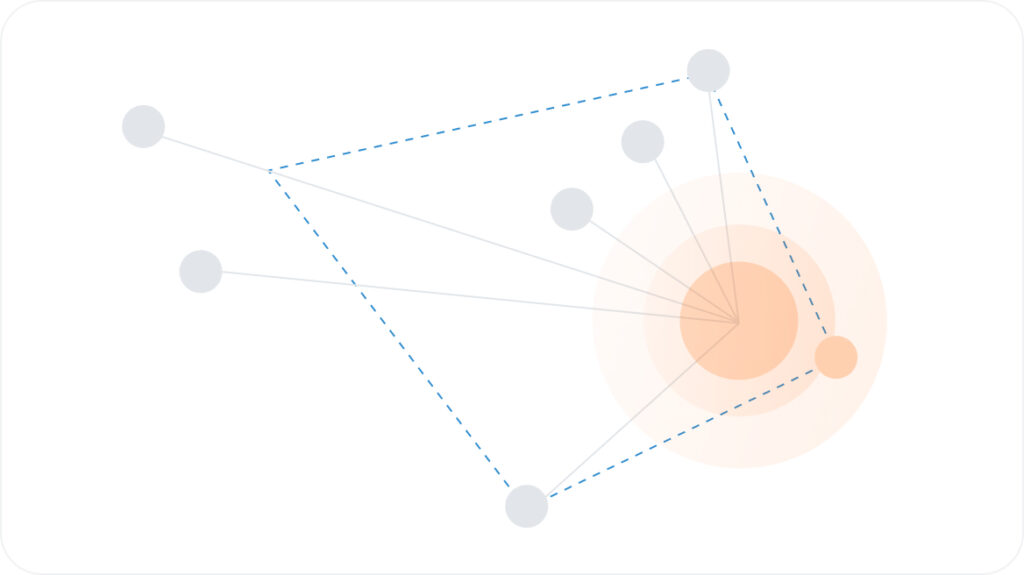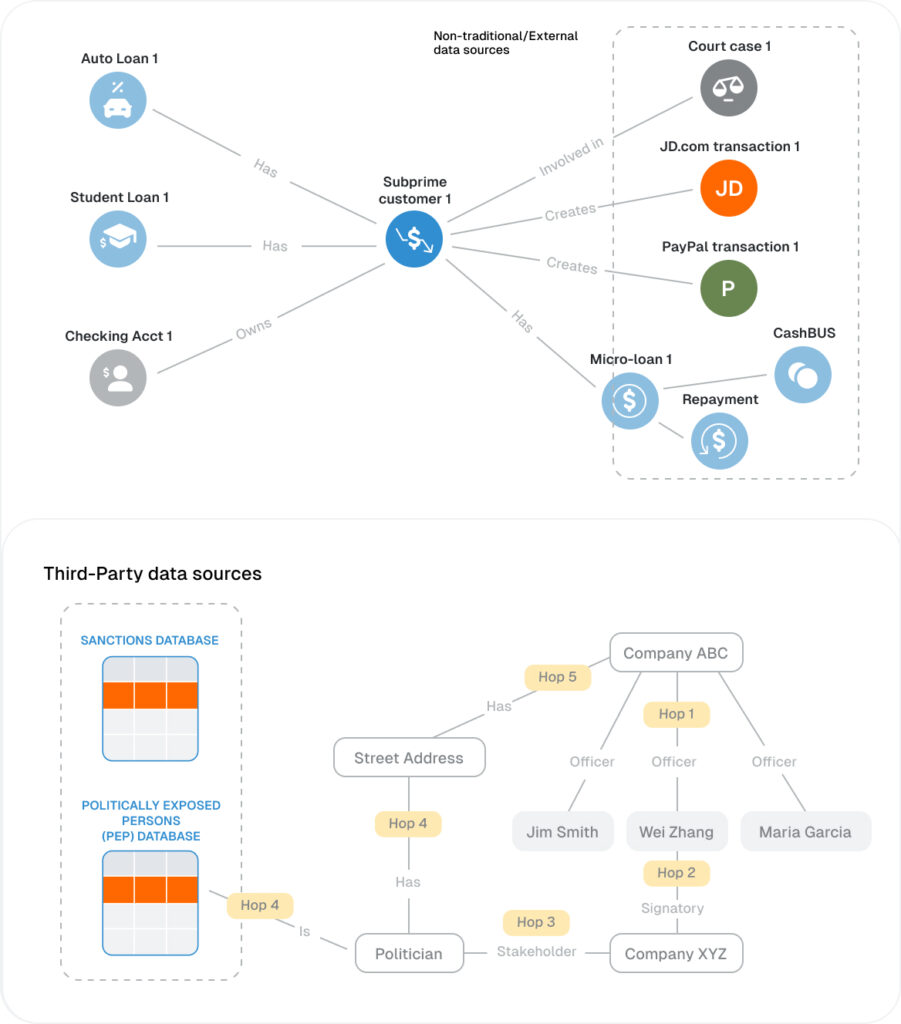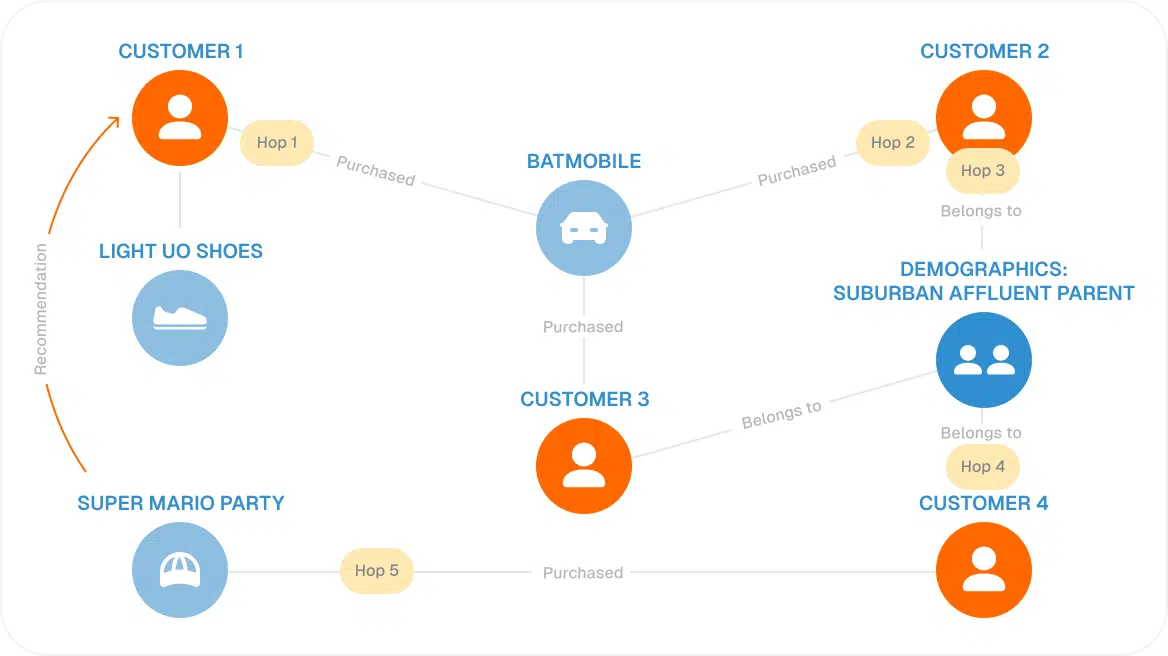

Transform Financial Services With TigerGraph Databases and AI
Increase in monthly successful fraud attempts for mid-large US retailers
Cost per dollar of fraud for US retail and eCommerce merchants
$1.3 Billion in OFAC sanctions penalties for 2019

Can Uncover Patterns of Financial Fraud
Tame the Rising Costs of Payments Fraud in Financial Services

Find Patterns of Fraud in Connected Data
Traditional fraud analytics solutions can’t detect bulk of the online payment fraud, as they can’t find complex payment fraud patterns with 6 or more connections or hops linking current payment to historical fraudulent activity. First and second generation graph databases can’t go beyond 3 hops in real-time. Native parallel graphs such as TigerGraph are purpose-built to find these patterns going 6 or more hops into the connected data and stop fraudulent transactions in real-time.
Read More
Improve Credit and Regulatory DataRisk Assessment and Monitoring with Enterprise Knowledge Graph
The US Treasury Department of Office of Foreign Assets Control (OFAC) has issued record fines in 2019 totaling up to 1.3 billion dollars. Banks all over the world are struggling to vet every account and each payment passing through its network to maintain regulatory compliance and avoid penalties.
Traditional solutions aren’t up to the task, as the risk assessment and monitoring solution requires combining and linking across all of the internal data about each account with external data sources as politically exposed persons (PEP) database and sanctions database such as those offered by World-Check from Refinitiv and OpenCorporates. TigerGraph provides analytics for risk assessment and monitoring going wide across internal and external datasets to find and flag connections with sanctioned entities. TigerGraph also finds potential money laundering rings and other suspicious activity.
Read More
Deliver a Real-time Customer 360 Across All Touchpoints
The competition for financial services is heating up. Amazon introduced a credit card for the ‘unbanked’ in June 2019, while Apple introduced Apple Card in August 2019. Google followed on its heels in November 2019 with the announcement of project Cache offering checking accounts for consumers in 2020. Facebook has also thrown their hat in the ring, with the Libra crypto currency in June 2019 and Facebook Payments in November 2019.
All of this means that now, more than ever the financial services organizations need to tap into their core asset – customer data. Data warehouses and data marts have consolidated the customer data. TigerGraph taps into as many as 50 or more datasets, connecting the entire customer journey across all channels. TigerGraph also allows customer service, sales, marketing and other client facing employees to find similar customers in real-time and create recommendations for cross-sell, up-sell as well as for churn prevention.
Read More
